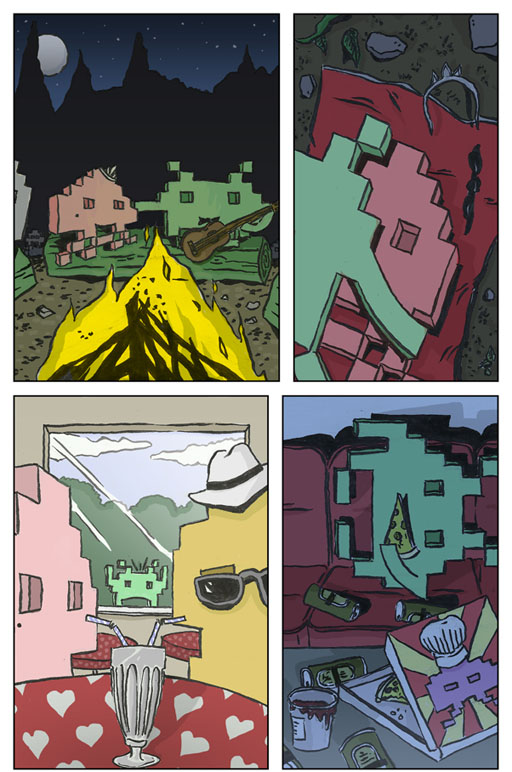Brainstorm: let’s create a cloud of words and concepts along an hypothetical games – stories axis.
This dichotomy created a lot of discussion among designers and theorist in the last 10 years or so regarding the best approach to the study of videogames.
Ludology vs Narratology
If I throw a ball at you, I don’t expect you to drop it and wait until it starts telling stories
Markku Eskelinen – Towards Computer Game Studies
Ludology was in part a response to what was perceived as an ideology within academia:
Narrativism
Storytelling is the only mode we have to communicate, express and make sense of the world.
Games tell stories, architecture tells stories etc…

And a response to a more “political” stance:
Academic colonialism
Computer games can by studied with the same conceptual tools as literature, theater and film, we only need to redefine the term narrative to include interactivity rather than creating a new discipline.
The Gaming Situation
The unique features of interactive texts, cybertexts, and games can be better understood if we analyze the “gaming situation” (Eskelinen) from the side of the player.
Interpretation (shared with linear media)
What’s happening?
What does it mean?
How do I feel about it?
What does the author want to convey?
Exploration
Interactive like a banana?
Non trivial actions (such as turning or scrolling a page) are required to reveal “hidden” content
Formation of goals
What do I have to do to win?
What I’m expected to do?
How can I cheat/break the game/find the limits of the system?
Intermission: do players formulate goals all the times? What’s the goal in the Sims?


The impulse toward goal formation in games is incidentally a big challenge for Artgame/notgame designers. The ideal player of an art game should ask herself: What’s the best way to experience this?
Recombination
Players reconfigure the internal state of a game according to predefined rules.
Creation of new content
A more extreme case of recombination in which the players modify content and mechanics or create their own.

Minecraft systems emerging from simple building blocks. Role-playing games, players tell a story together…
Agency
Most of these unique features of the gaming situation (or cyberdrama or interactive literature…) relate to the concept of agency, popularized by media theorist Janet Murray.
Agency: the satisfying power to take meaningful action and see the results of our decisions and choices
Murray sees immersion and agency as central elements for the enjoyment of games.
Every expressive medium has its own unique patterns of desire; its own way of giving pleasure, of creating beauty, of capturing what we feel to be true about life; its own aesthetic.
Janet Murray – Hamlet on the Holodeck 1997
The issue of agency will come up frequently while discussing story-based and art/arty games.
Can there be a game without agency?
Let’s examine 3 extreme cases: The Graveyard by Tale of Tales, a Call of Duty “pacifist speedrun”, and Progress Quest.
http://www.youtube.com/watch?v=TKwZ6oZybCA
http://www.youtube.com/watch?v=3pv-0R66BBA&hd=1
Moving away from the player’s perspective we can talk about another substantial difference between games & c. and non-interactive texts.
Simulation vs Representation
To simulate is to model a system through a different system which maintains to somebody some of the behaviors of the original system
Gonzalo Frasca – Simulation vs Narrative 2003
Frasca’s pipe example is still a great way to grasp these concepts. CLICK HERE NOW!
Question: What is the difference between these two simulations?

More info

Play here
“a system which maintains *to somebody* some of the behaviors of the original system”
Here’s a nice way to describe the relationship between stories and games:
Games as story generators
The output of a simulation might look the same as a representation (story, video…) but the experience of playing is very different.
Machinima videos are exemplary in this sense. My Trip to Liberty City by Jim Munroe (2003):
http://www.youtube.com/watch?v=q4Laeqr9e-k
To summarize: ludologists claim that it’s not possible to fully understand games and simulations by analyzing their linear output.
Narrativist theories coming from literature, film, theater and other linear media fields must be combined with conceptual tools from cybernetics.
Cybernetics is the study of systems that involve closed loops (feedback)
Can you see the game-player relationship in this diagram?










